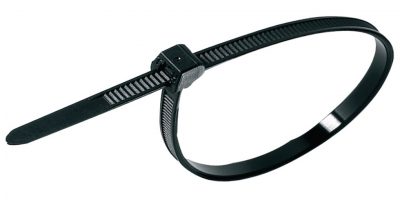Project Report For Cable Ties
Introduction
Project Report for Cable Ties is as follows.
Standard cable ties are typically made of nylon grade 6.6 and are used to harness and bundle things, most often wires. Each tie has serrated “teeth” on one end that lock within the head, or pawl, on the other side of the strap. Various manufacturers provide cable ties in a variety of colours and sizes to meet the needs of certain applications. Cable ties can also be manufactured in UV-protected varieties.
Cable ties, also known as wire ties, zip ties, or hose ties, are typical low-cost consumables in workshops, offices, and on construction sites. They are used to secure, fasten, and segregate cables and wires for safety, identification, and organisation purposes.
Cable ties may have varied colours, materials, lengths, and widths depending on the use, making them an excellent addition to any toolset. Because cable ties are cut rather than loosened and reused, they are frequently one-time-use goods; however, reusable cable ties are also available.If a closed loop must be reopened, rather than severing the cable tie, it may be possible to remove the ratchet from the rack.

Types Of Cable Ties
- Natural Cable Ties: Natural Cable Ties are typically made of 6.6 nylon grade. The manufacturer’s flammability resistance criterion should be met by all ties. Many of these ties may be adjusted manually, and a variety of pneumatic equipment are available to aid shorten installation time. Nylon grade 4.6 is commonly seen in higher temperature nylon.
- Stainless Steel Ties: Stainless Steel Ties are often used in situations that demand a high level of resistance to corrosion and environmental conditions that might cause conventional nylon cables to dissolve. They can be utilised indoors, outdoors, or underground. For enhanced corrosion protection, manufacturers may offer black nylon sleeves.
- UV Protected Cable Ties: UV Protected Cable Ties often known as black cable ties, are designed for outdoor use. They are resistant to oils and grease, just as natural cable ties, but they vary in that they are also resistant to environmental toxins. These cables are frequently used for applications requiring a high tensile holding strength and are typically made of nylon 12-grade material.
Get Completely Custom Bankable Project Report
Market Potential Of Cable Ties
At a CAGR of 6.4% from 2022 to 2031, the global market for cable ties is anticipated to grow from $1.4 billion in 2021 to $2.6 billion by 2031.
Cable ties are utilised in a variety of industries, including electronics, construction, and automotive. The electronics industry is the primary application area for nylon cable ties, which are used to bind the bundle of cables within electronics devices to protect them from damage and short circuits.
As a result, they preserve electrical devices and help to extend their lifespan. Cable ties are an excellent option for the electronics industry since they frequently deal with the complications associated with bundles of cables or wires during electrical installation. Once applied, the cable ties’ permanent and temporary locking features ensure a tight and secure grasp.
The cable ties market is divided into four categories: material type, product type, end-use industry, and region. The market is divided into several product types, including nylon, stainless steel, and others. The market is divided into releasable, non-releasable, beaded, and others according on product type. The market is segmented by end-use industry into automotive, electronics and electrical, consumer products, building and construction, marine, and others.
In 2021, Asia-Pacific dominated the market with the biggest revenue share. In Asia-Pacific, cable ties are largely used in the automobile, consumer goods, and electronics industries. Cable ties are widely used to safeguard expensive automobile parts from vibrations, scuffs, dents, dings, and damage during storage and shipping. Barrier nylon fabrics for tubing, harnesses and straps, component shields, and corrugated boxed solutions are included.

